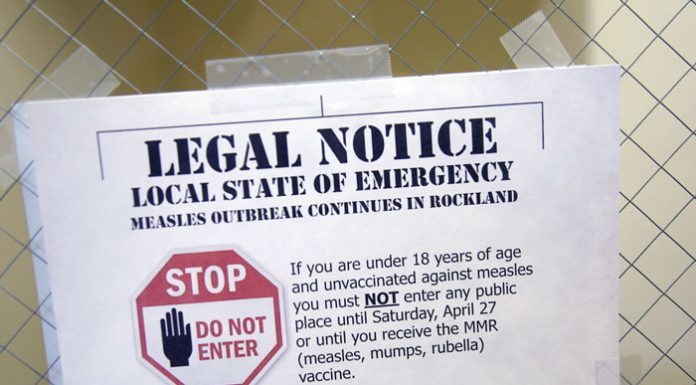
For Rebbetzin Chana Davis, it was a small decision that changed the course of her life.
“I was born in England,” she begins. “My father, Rav Eliezer Yehuda Leib Tarshish, zt”l, was from Lita. As a bachur, he had to travel to Germany for medical reasons. In 1934, he became aware of the growing danger of Nazism and anti-Semitism. The German Jews were patriotic. They couldn’t imagine anything going wrong. But as an outsider, he was able to see things more objectively. He felt that it was a dangerous place, and he left for England right after receiving the care he needed. There, he was redt a shidduch with a German-born girl named Esther Blumenthal, who traveled to England to meet him. They got married. The move to England saved my parents from Hitler’s Final Solution.
“In 1949, when I was eight years old, we moved to America. We went by ship. My father had gone ahead of us, so it was only my mother, my brother and me. My mother was very seasick, but we kids had fun on the boat.
“We settled in Philadelphia, where my father was the rav of a shul for a year. He had been told that it was a frum place, but when we arrived there was no mechitzah. He put one up. There was a phone in the hallway that was used to call people on Shabbos to come for minyan. He got rid of it. It was a hard year. During that time, he also taught in the afterschool talmud Torah. One boy became frum under his tutelage, and he stayed in touch with my father for many years afterwards.
“Then we moved to New York, where I attended the Manhattan Day School. I got a very good education, but it was coed and very Zionistic. Classes were Ivrit b’Ivrit. You weren’t allowed to speak in English during limmudei kodesh. This would actually prove to be a great help to me later on. I came into the school as a fifth grader, and by eighth grade I was fluent in Hebrew. After that, my principal recommended that I go to the local girls-only high school. My parents were greenhorns. They didn’t know that it was extremely modern. The principal thought it was a good thing so they agreed.
“That summer, I went to Camp Bais Yaakov. The girls there had heard about my plans and went to speak to Rav Berman, the manhig ruchani. He called me over and asked why I was planning on going to that particular high school. I explained that my principal had recommended it, but he was convinced that Bais Yaakov would be a better fit. I came home and told my parents that that was where I wanted to go. The nearest Bais Yaakov was in Williamsburg, so every day I made the trip from Washington Heights to Williamsburg and back again by subway. It was pretty unappetizing, but a lot more Yidden took the train in those days, especially during rush hour, and I could just sit and do my homework. The subway was preferable to taking the city bus, which would have taken a lot longer with all the traffic and stops. In retrospect, going to Bais Yaakov changed my life.”
“In what way?” I inquire.
“It really had a profound effect on me,” she explains. “In those days, Rebbetzin Kaplan, a”h, was a strong presence in the school. She was always dressed very conservatively and neatly and wore a plain sheitel, nothing fancy. She was softspoken and had a musical voice, and every word was well chosen and deliberate. She had a beautiful koach hadibbur and was an excellent teacher. I remember that she taught us Shir Hashirim.
“Rebbetzin Kaplan had been a student of Sara Schenirer, a”h, and she made it a point of speaking about her whenever possible. On her yahrtzeit, Rebbetzin Kaplan would stand on the stage and talk about her years in the first Bais Yaakov in Krakow with tears rolling down her cheeks. Sara Schenirer was a real presence to us because of Rebbetzin Kaplan. Other teachers had also been her students but didn’t share much about her at all. It was Rebbetzin Kaplan who gave us that connection.
“Another influential teacher was Rebbetzin Bender. She was a real demus, a personage. Aside from being a great teacher, she was extremely warm. You knew that she cared about you. We also had some male teachers for limmudei kodesh whom I really enjoyed because of the depth of their knowledge. One of them was Rabbi Shlome Rotenberg, who taught us historiah. He authored the Toldos Am Olam series on Jewish history.”
“What was school like back then? Were the focuses different?” I ask her.
“It was just as formal as it is today, and the focus was definitely on academics,” she says. “I was a good student, so I enjoyed school. The teachers were of extremely high caliber. It was such a merit for us to have been taught by them.
“Seminary, though, was a new concept. Everyone went to college after high school, and I’m not talking about the colleges like Touro, TTI and all the other programs that exist nowadays. Rebbetzin Kaplan spoke a lot about not going to college. She opened the Bais Yaakov Teachers’ Seminary and strongly encouraged the girls to go there instead. Its objective was to teach girls pedagogy, how to be teachers. We learned different methods and how to make model lessons. The idea was to pass on Sara Schenirer’s teachings.
“The whole idea of supporting husbands who would learn in kollel also started with Rebbetzin Kaplan. She pushed the girls to marry husbands who would sit and learn. This involved real mesiras nefesh in those days, as most parents couldn’t afford to give their children any support. They would tell their daughters, ‘You’d better get a good kallah coat, because it has to last you many, many years.’ She was breaking new ground by encouraging teaching as a profession and a kollel lifestyle. These things were virtually unheard of.
“By 1960 I had graduated from seminary, gotten married and was living in Boro Park. My first teaching job was as an eighth grade substitute in the Bais Yaakov of the East Bronx. There was also a Bais Yaakov of the West Bronx. I had to travel an hour each way by train, but I was used to it from my high school days.
“The school was run by Dr. Ullman, a chashuve German Jew from Washington Heights. I figured I’d take the job and see what happened next. Every so often, Dr. Ulman would ask me to stay a little longer, and I ended up finishing out the year. The next year, I was already teaching in Bais Yaakov high school. They had wanted to me get some experience before hiring me. I was a teacher there from 1961 until 1968. My students were the first postwar generation, and it was the norm for parents to be less involved in their children’s schooling than they are now; there would be a PTA conference maybe once a year. I taught Yahadus, halachah, historiah and Mishlei. I enjoyed teaching Mishlei the most; it was almost a calling. I wanted the girls to not only know the simple meaning of the words, but to derive a life lesson from every pasuk. I had notes on 17 perakim of Mishlei! The learning was different in those days. You could really pack it in because the kids were able to absorb it. But after teaching Mishlei for three years I asked Rabbi Hellman for a change, so I switched to teaching Peirush Hatefillah.
“There is no question that there is such a thing as yeridas hadoros. Years ago, the teachers were more knowledgeable, and they expected a lot more from their students. This became less and less so. Unfortunately, a lot of things were dumbed down.”




















